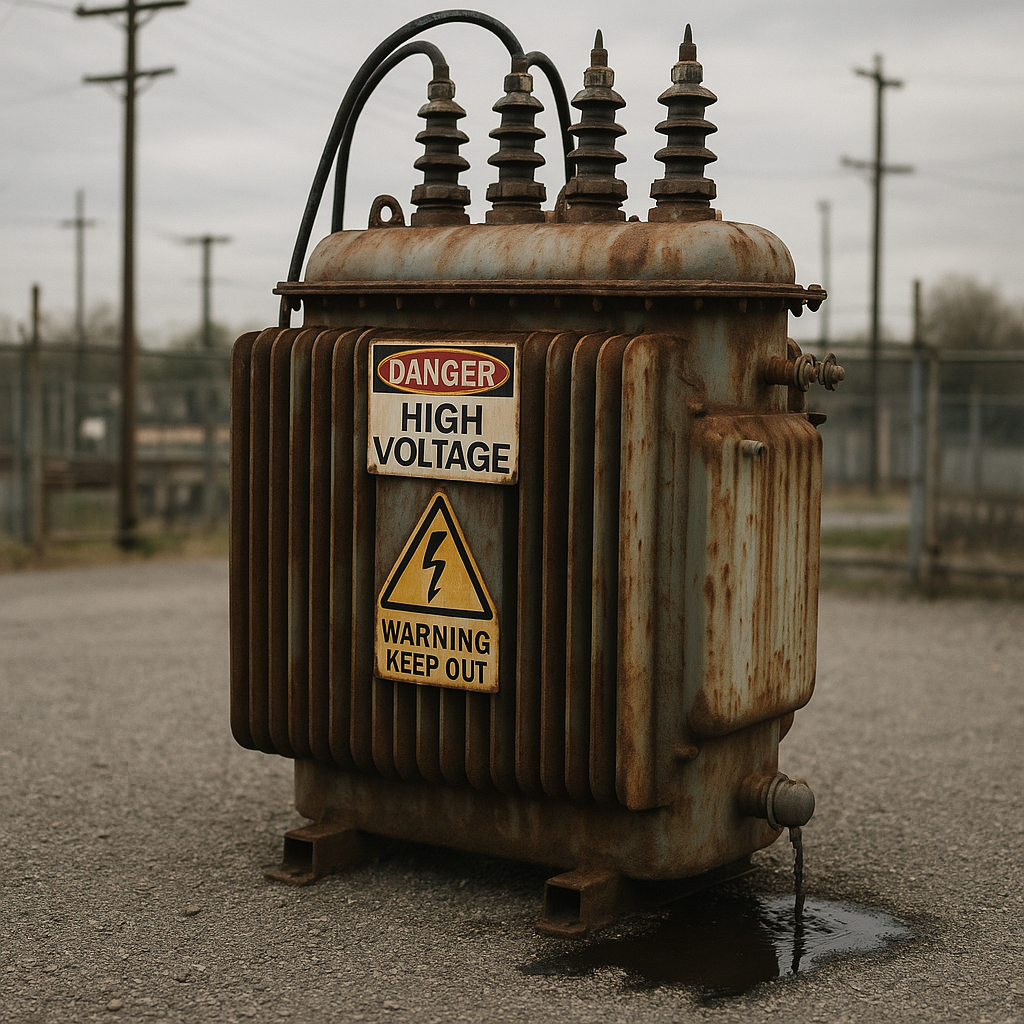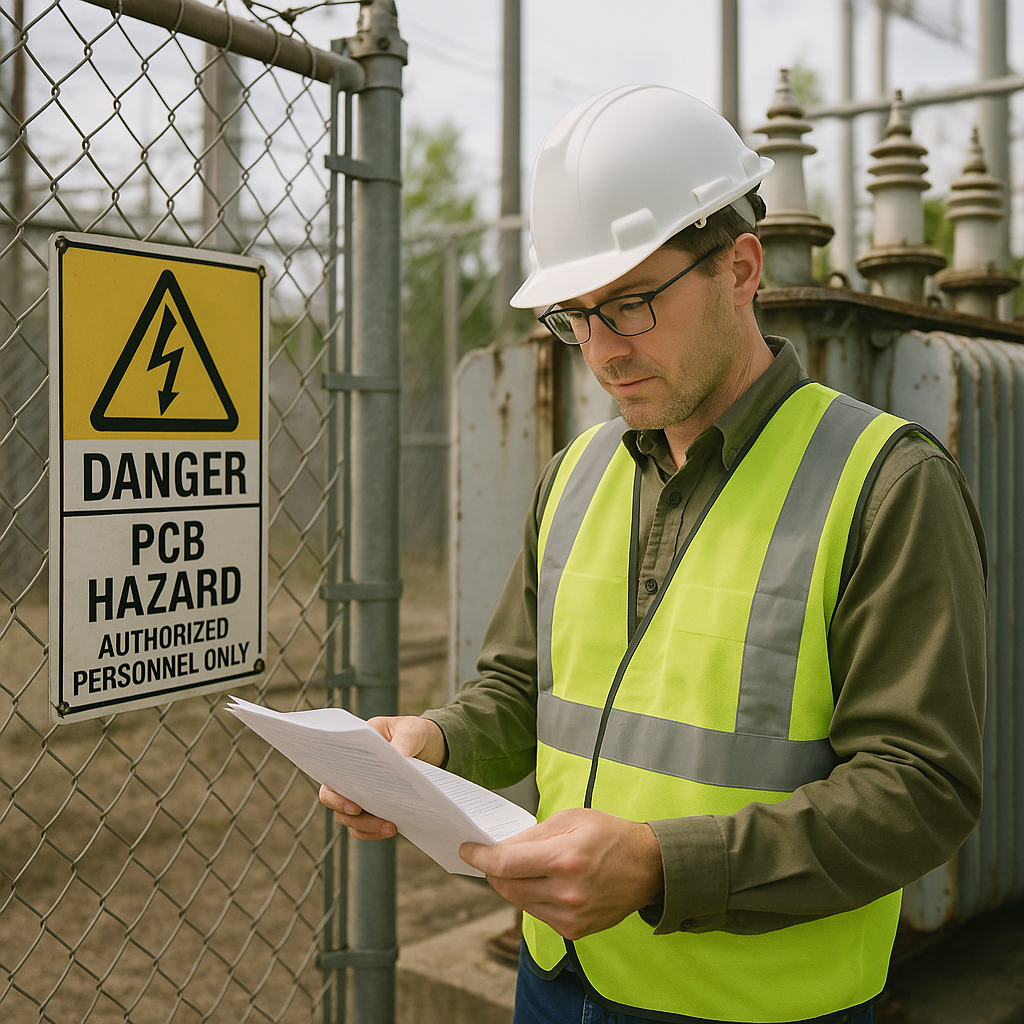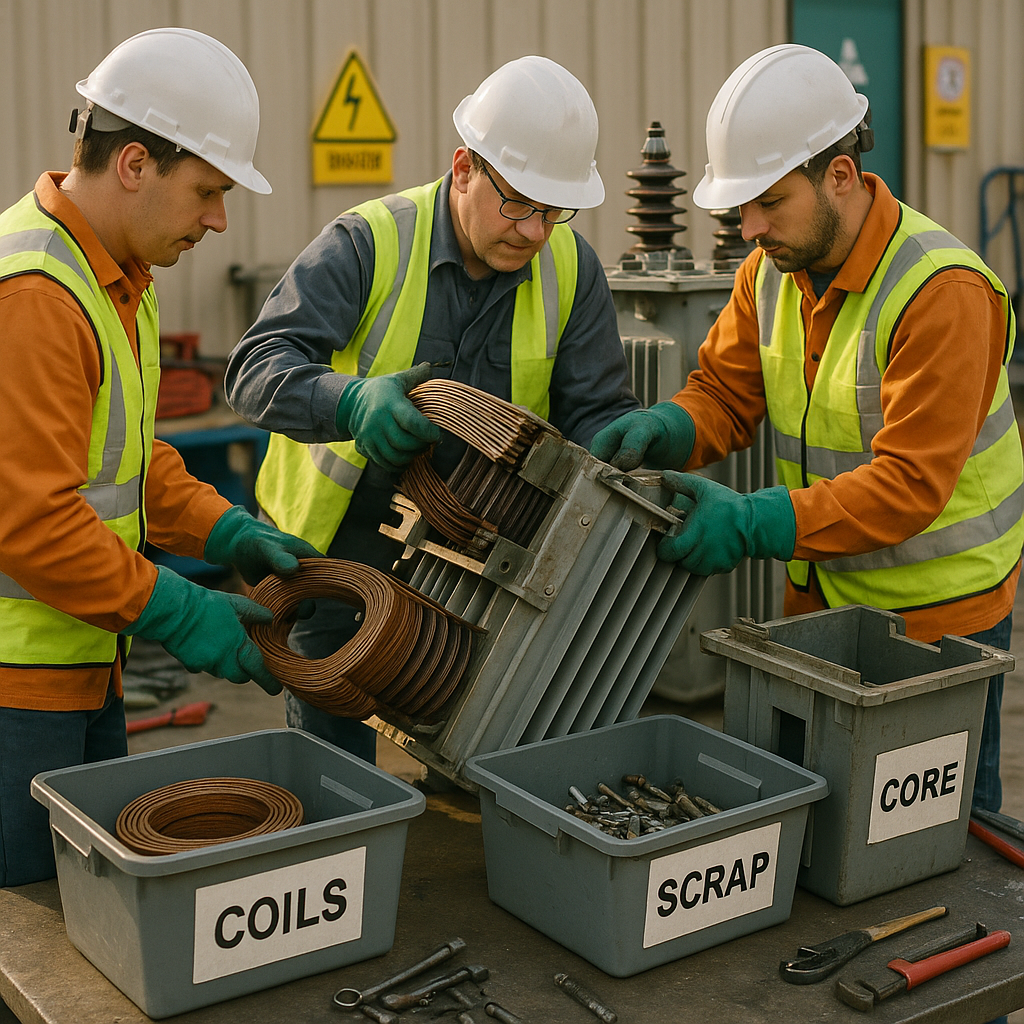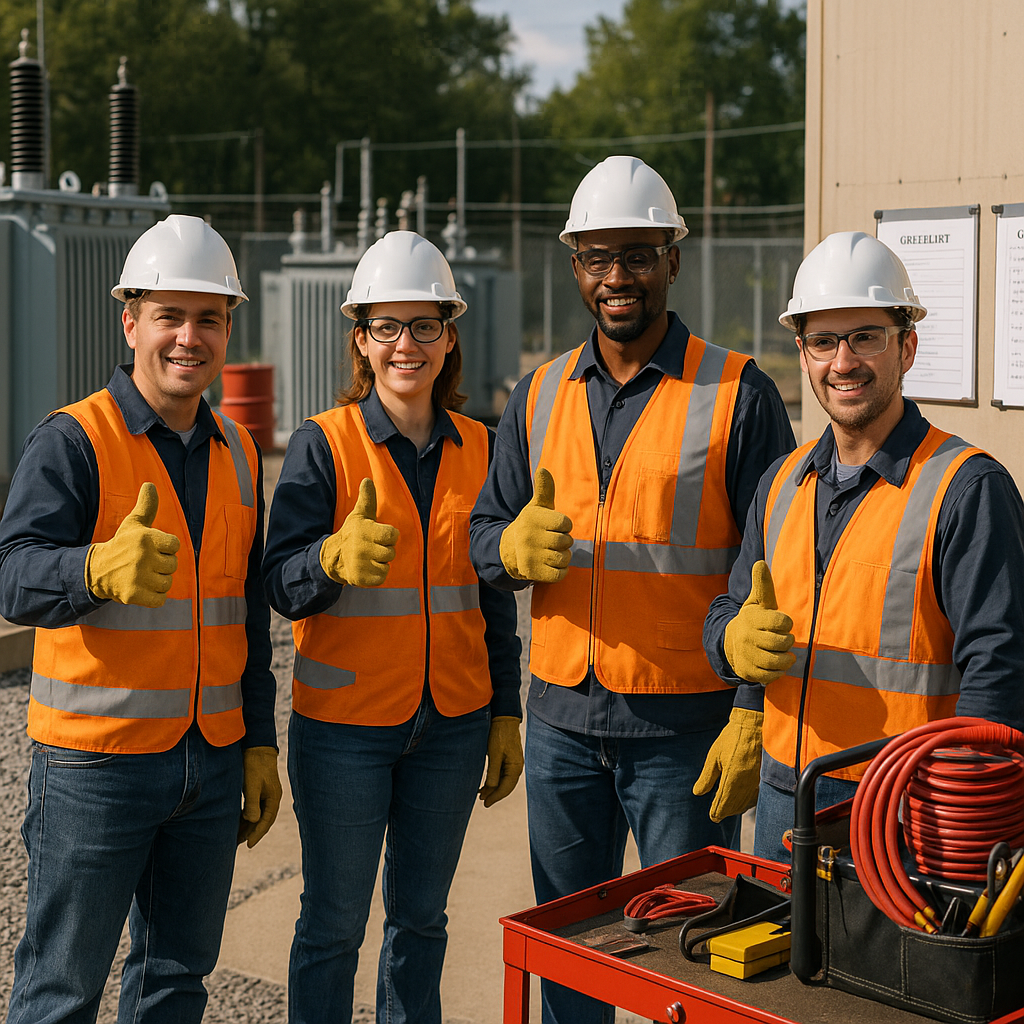5901 Botham Jean Blvd, Dallas, TX 75215
Are Old Power Transformers Considered Hazardous Waste Under RCRA?
July 30, 2025The disposal of old power transformers presents significant environmental challenges for many industries. These essential components of our electrical infrastructure often contain substances that require careful handling at the end of their service life. Under the Resource Conservation and Recovery Act (RCRA), certain transformers are classified as hazardous waste, triggering specific regulatory requirements.
Transformers manufactured before 1979 frequently contain polychlorinated biphenyls (PCBs). These synthetic chemicals were once valued for their stability and fire-resistant qualities in electrical equipment. However, their toxic nature led the Environmental Protection Agency to ban their production in the United States.
Determining whether your old transformer qualifies as hazardous waste requires an understanding of several key factors. The age of the equipment, PCB concentration levels, and specific state regulations all play crucial roles in proper classification. This regulatory framework helps prevent these persistent environmental contaminants from entering soil and water systems.
What Makes Old Power Transformers Potentially Hazardous?

Old power transformers pose significant environmental and health risks primarily due to the materials used in their construction and operation. The most concerning component is the cooling oil that prevents transformers from overheating during operation.
Polychlorinated biphenyls (PCBs) were widely used in transformer oils before their production was banned in the United States in 1979. These synthetic chemicals were prized for their excellent insulating properties, non-flammability, and stability. Unfortunately, these same qualities make PCBs extraordinarily persistent in the environment.
PCBs are highly toxic substances that do not biodegrade naturally. Once released, they can remain intact for decades. They bioaccumulate in animal tissues and move up the food chain, becoming more concentrated at each level. In humans and wildlife, PCB exposure has been linked to cancer, immune system suppression, reproductive disorders, and developmental problems.
Even transformers manufactured after the PCB ban may contain contamination. Mineral oil, the common replacement for PCBs, is fully miscible with PCBs, forming a homogenous mixture in any proportion. During the transition period, the same equipment used to handle PCBs was often repurposed for mineral oil, resulting in cross-contamination. In some states, transformer oils with PCB concentrations as low as 5 parts per million are classified as hazardous waste.
Beyond cooling oils, old transformers contain other hazardous materials. Heavy metals such as lead, mercury, and cadmium may be present in various components. These metals can leach into soil and groundwater if improperly disposed of, causing long-term environmental damage and health concerns for nearby communities.
When old transformers fail catastrophically, they may rupture or catch fire, releasing these contaminants into the surrounding environment. Transformer fires are particularly dangerous as they can burn for days and generate even more toxic byproducts. Burning PCBs produces chlorinated dioxins and dibenzofurans, which are even more toxic than the original PCBs.
The combination of these factors makes old power transformers environmental hazards requiring specialized handling and disposal protocols. Proper decommissioning involves testing for contaminants, safely removing oils, and recycling components when possible. Without these precautions, leaking transformers can contaminate soil and water sources, creating costly cleanup situations and potential public health emergencies.
| PCB Concentration | Disposal Requirement |
| Less than 2 ppm | Not regulated, can be disposed of in municipal or non-municipal nonhazardous waste landfill |
| 2 ppm to less than 50 ppm | Washington State listed as WPCB – requires Ecology-permitted dangerous waste facility or RCRA Subtitle C Landfill |
| 50 ppm and greater | Must be disposed of in TSCA incinerator, TSCA chemical waste landfill, or RCRA Subtitle C landfill |
| Greater than 500 ppm | Must be disposed of in a TSCA incinerator |
The risks associated with old transformers highlight why specialized recycling facilities and hazardous waste experts are essential for proper end-of-life management. Their expertise ensures these potentially dangerous devices are handled safely, preventing environmental contamination while recovering valuable materials like copper and aluminum for reuse.
How Does RCRA Regulate Transformer Disposal?

The Resource Conservation and Recovery Act (RCRA) establishes a comprehensive framework for managing hazardous waste throughout its lifecycle. For PCB-containing transformers, RCRA works alongside the Toxic Substances Control Act (TSCA) to ensure proper handling and disposal. This framework classifies PCB materials as hazardous waste due to their environmental persistence and potential health risks.
Under RCRA guidelines, organizations must first determine if their transformer waste contains regulated levels of PCBs. This identification process typically involves testing the transformer oil or reviewing existing documentation about the equipment. Transformers manufactured before 1979 are more likely to contain PCBs, as their production was banned in the United States after this date.
The Environmental Protection Agency (EPA) enforces RCRA regulations through a permitting system for facilities that treat, store, or dispose of hazardous waste. These permits specify requirements for:
- Waste characterization and testing procedures
- Containment methods to prevent leaks or spills
- Record-keeping and reporting obligations
- Personnel training requirements
- Emergency response planning
RCRA mandates specific handling protocols for PCB transformers. Leaking units require immediate containment to prevent environmental contamination. During transportation, PCB-containing materials must be properly packaged, labeled, and accompanied by a hazardous waste manifest that tracks the waste from generation to disposal.
Disposal options for PCB transformers are strictly limited under RCRA. Approved methods include high-temperature incineration at licensed facilities that can destroy PCB molecules. The transformer carcass itself must be decontaminated to remove PCB residues before recycling or disposal in designated landfills.
The EPA’s cradle-to-grave tracking system ensures accountability throughout the disposal process. This system requires detailed documentation from the moment the transformer is designated as waste until its final disposal, with records retained for at least three years.
[[artifact_table]]Key RCRA Requirements for PCB Transformer Disposal[[/artifact_table]]
State regulations often impose additional requirements beyond federal RCRA standards. These may include stricter concentration thresholds, more extensive testing requirements, or specific disposal facility designations. Organizations must comply with both federal and state regulations, following the more stringent standard when differences exist.
For facilities handling large volumes of transformer waste, RCRA may require the development of waste minimization plans. These plans outline strategies to reduce the amount of hazardous waste generated through better maintenance practices, equipment upgrades, or alternative disposal methods.
Non-compliance with RCRA regulations can result in significant penalties, including substantial fines and potential criminal charges for willful violations. The EPA conducts regular inspections and enforcement actions to ensure proper hazardous waste management practices are followed.
What Are the Steps for Proper Disposal of Old Transformers?

Disposing of old transformers requires careful planning and execution since these electrical components often contain hazardous materials posing environmental and health risks if mishandled. A systematic disposal process ensures compliance with regulations and protects the environment.
Step 1: Identify and Test for Hazardous Materials
The first crucial step is testing the transformer for hazardous substances. Transformers manufactured before 1979 often contain polychlorinated biphenyls (PCBs), toxic chemicals that persist in the environment. Professional testing determines PCB concentration levels, which impact disposal requirements directly.
Laboratory analysis must adhere to EPA Method 8082A or IEC 61619 standards. Results categorize transformers as non-detectable (below 2 ppm), low-level contamination (2-50 ppm), or hazardous (above 50 ppm), determining all subsequent handling procedures.
Step 2: Documentation and Compliance Planning
Documentation begins immediately after testing, including laboratory test reports, waste classification forms, and transportation manifests. This process is governed by regulations from multiple authorities, including the Resource Conservation and Recovery Act (RCRA) and the Toxic Substances Control Act (TSCA).
Records must capture equipment serial numbers, installation dates, oil volume, and test results. These documents provide proof of compliance during audits and help track the transformer through its disposal journey.
Step 3: Safe Removal and Containment
Transformers must be de-energized and disconnected following strict electrical safety protocols, requiring specialized equipment and trained personnel to prevent accidents and oil spills.
For oil-filled transformers, drainage occurs under controlled conditions using vacuum pumps and spill containment systems. The oil is stored in UN-approved containers with proper hazard labels. Secondary containment measures prevent environmental contamination during this critical stage.
| PCB Concentration | Classification | Handling Requirements |
| Less than 50 ppm | Non-Contaminated | No specific action required |
| 50 ppm – 500 ppm | Contaminated | Remove oil and flush device to reduce concentration below 50 ppm |
| More than 500 ppm | Highly Contaminated | Immediate removal and multiple flush operations to reduce concentration below 50 ppm |
Step 4: Transport to Recycling or Disposal Facility
Transporting old transformers requires specialized carriers with hazardous waste permits. Vehicles must display proper placards according to Department of Transportation regulations. Movement documentation includes waste manifests that track the transformer from its origin to its final destination.
For transformers containing PCBs above regulatory thresholds, transporters need additional certifications. The Basel Convention governs international shipments of hazardous transformer components, requiring prior informed consent from receiving countries.
Step 5: Decontamination Process
Transformers with low to moderate contamination may undergo decontamination, removing hazardous substances while preserving reusable components. Dechlorination techniques can break down PCB molecules in transformer oil, potentially allowing for reclassification and recycling.
Decontamination must occur at licensed facilities with specialized equipment. The process requires verification testing to confirm successful treatment before materials can proceed to recycling streams.
Step 6: Material Recycling and Recovery
Transformers contain valuable materials like copper windings, steel cores, and aluminum components. After proper decontamination, these metals enter recycling streams and are reprocessed into new products.
Oil recycling involves removing contaminants through filtering and regeneration processes. Clean mineral oil can serve as industrial fuel or return to service in refurbished equipment. This recovery phase significantly reduces waste while capturing resource value.
Step 7: Final Disposal of Hazardous Components
Components containing high PCB levels require destruction at specialized facilities. High-temperature incineration (above 1200°C) completely destroys PCB molecules. Alternative technologies include plasma arc systems that achieve even higher temperatures for maximum destruction efficiency.
Following disposal, facilities issue a Certificate of Destruction confirming proper handling, completing the documentation chain and providing legal evidence of compliance with environmental regulations.
The Importance of Professional Waste Management Services
Transformer disposal requires specialized expertise and equipment that most organizations lack internally. Professional hazardous waste management companies offer comprehensive services including testing, removal, transport, and proper disposal.
These specialists maintain current knowledge of complex regulatory requirements across jurisdictions. They possess the necessary permits, equipment, and training to handle hazardous materials safely. Their involvement significantly reduces liability risks while ensuring environmental protection.
Working with certified disposal partners provides access to approved facilities and established disposal pathways. This partnership creates a documented chain of custody, protecting organizations from future liability claims related to environmental contamination.
Conclusion: Ensuring Compliant and Safe Transformer Disposal

Proper disposal of old power transformers is a critical environmental responsibility and regulatory obligation. Throughout this article, we’ve highlighted that many aging transformers contain hazardous materials like PCBs, which require specialized handling under RCRA regulations. Improper disposal can lead not only to legal penalties but also to the potential contamination of soil and water resources.
Professional disposal services offer the expertise needed to safely manage transformer recycling and disposal. From initial testing for PCB contamination to the proper draining of oils and dismantling of components, these specialized services ensure that all materials are handled according to current regulations. Even transformers that don’t contain PCBs require proper disposal to recover valuable metals and prevent environmental harm.
For assistance with your transformer disposal needs, contact Okon Recycling at 214-717-4083. Our team provides compliant, environmentally responsible transformer recycling services that help you meet regulatory requirements while recovering valuable materials from your end-of-life equipment.
